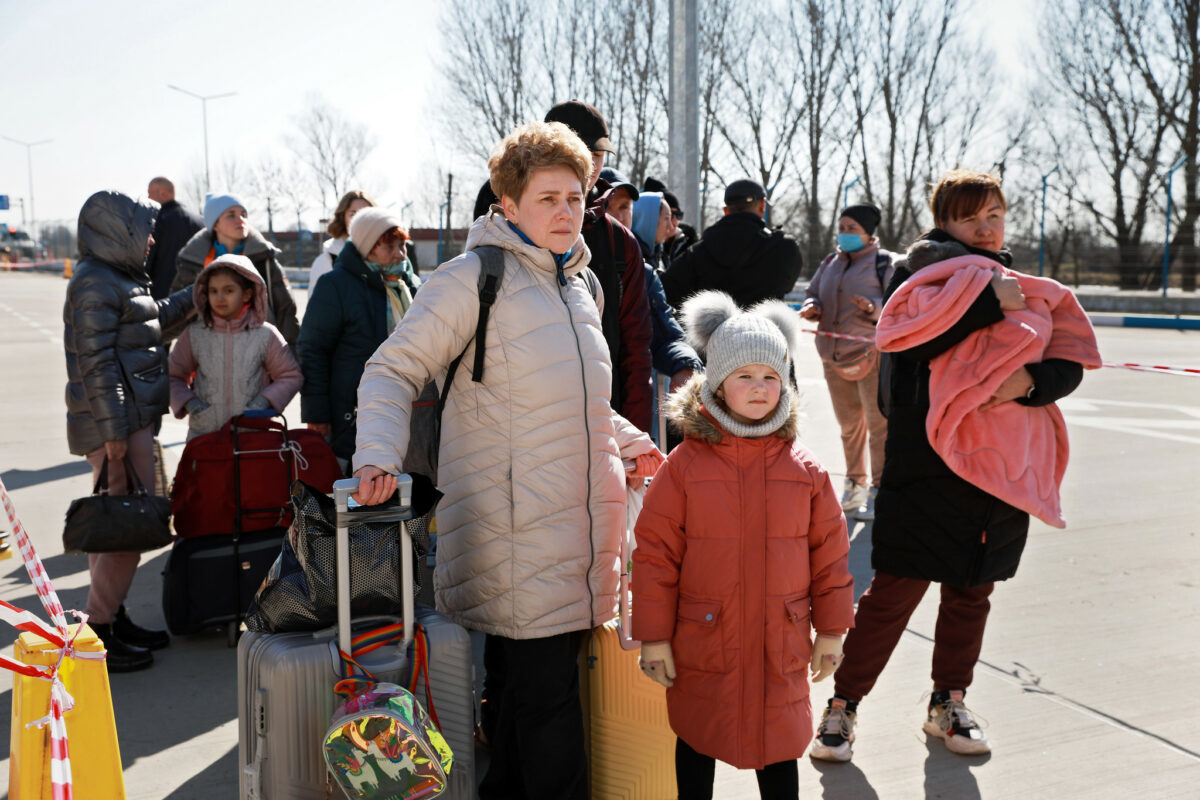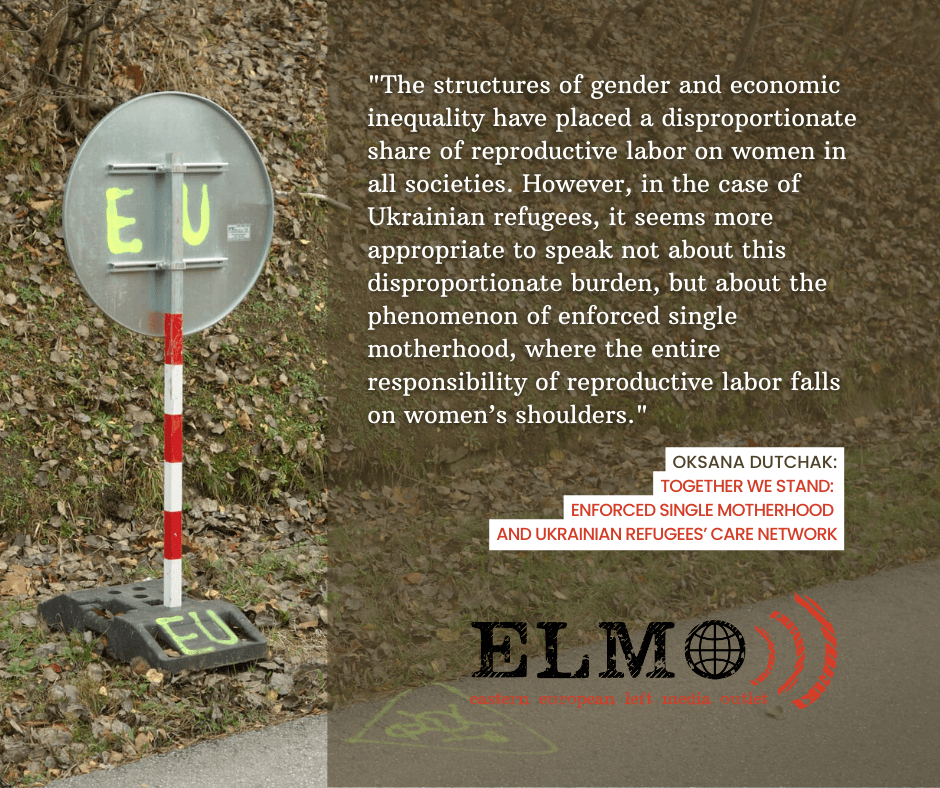
This article is part of the multilingual ELMO series Transnational migration in CEE from intersectional perspectives of race, gender, class and citizenship.
With the beginning of the Russian invasion of Ukraine in February 2022, approximately 7.8 million Ukrainians have fled to European countries[1], searching for safety abroad.[2] According to UNHCR Regional intentions report, approximately 87%[3] of Ukrainian refugees are women and children. Some recalculation of the report results allows an estimation of 35% or approximately 2.7 million Ukrainian children in Europe.[4] Due to the decision of the Ukrainian government to restrict men’s cross-border mobility, this crossborder displacement is extremely gendered and leads to the reconfiguration of labor in separated families. The structures of gender and economic inequality have placed a disproportionate share of reproductive labor on women in all societies, including in Ukraine. However, in the case of Ukrainian refugees, it seems more appropriate to speak not about this disproportionate burden, but about the phenomenon of enforced single motherhood, where the entire responsibility of reproductive labor falls on women’s shoulders.
In this article I analyze how reproductive labor is managed by Ukrainian refugees in the context of enforced single motherhood. I am particularly focused on the role that informal networks of support play. While being deeply gendered and depoliticized, these networks offer women a source of time, critically needed for social reproduction. How are these networks of support (re)created in and after displacement? How do they structure the lives and experiences of Ukrainian refugees? Which structures of inequalities stand behind them and how should these informal networks be evaluated from a political perspective? I will provide some preliminary answers, based on interviews with Ukrainian refugees, participatory observation and, well, my own experience of enforced single motherhood in refuge.
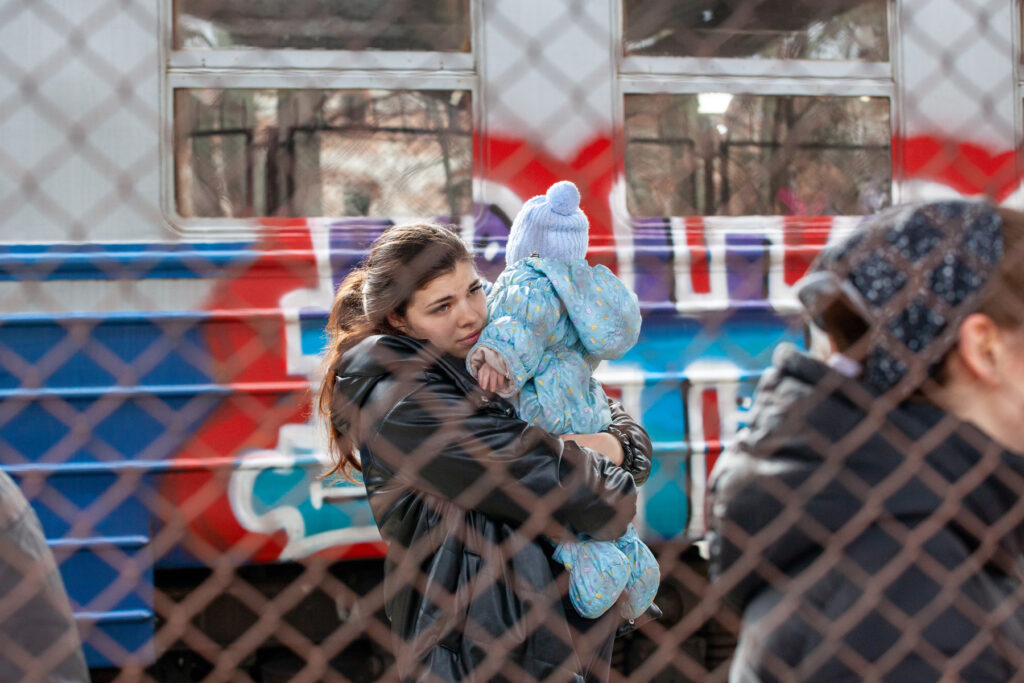
The private case of social reproduction under capitalism
The ideal model of capitalism presupposes that people earn money to sustain their life and the lives of their families. However, in the structures of socio-economic inequalities which lead to poverty wages and unemployment, society obviously cannot rely only on paid employment to get resources for social reproduction. Moreover, this ideal model ideologically and practically ignores the part of social reproduction that requires reproductive labor; namely housework and care labor, without which individuals, families, communities, capitalist production and society as a whole cannot function. This critique has been foregrounded by feminist Marxist theory of social reproduction.[5]
While there are a lot of ongoing theoretical debates in Marxist theory of social reproduction, they go beyond the purpose of this article. But what is important in the context of everyday mechanics of social reproduction, as Marxist theory highlights, is that people attain additional resources for social reproduction from state intervention, charity, subsistence agriculture, and informal networks.[6] Hence, the puzzle of social reproduction in capitalist society is impossible to solve without paying attention to extra-market relations.

All in all, social reproduction in modern societies stands on the shaky (im)balance between material resources and time, upheld by structures of capitalism and patriarchy. On the one hand, material resources for social reproduction of the working classes are attained predominantly from paid work, which requires time to exercise one’s labor power. These are supplemented by material resources from other activities, some of which also require time, like subsistence agriculture or side-jobs. To “get” that time, together with time for reproductive labor, other sources are used,[7] where state intervention and informal networks are the most stable and, hence, play the dominant role.
Unlike state intervention in the form of care infrastructure, informal networks stay behind the curtain of private life. Though their role is immense, it is also naturalized and depoliticized. In the context of war, displacement, and policies that enforce single motherhood among Ukrainian refugees, the role of informal networks becomes quite prominent. Though this role has always been considerable.
Stitching the gaps of care
Back in pre-war “normality,” despite persistent gender inequality, Ukrainian women were integrated into the local (predominantly public) care system. This system, however, has been haunted by neoliberal austerity for years.[8] Presented as an “optimization” of kindergartens, schools, hospitals and other care facilities against the background of chronic underfinancing, reforms of care infrastructures created a feminized cohort of working poor[9] as well as recurring gaps in access to and functioning of care institutions,[10] thus deepening gender inequality.
As in other societies, the care gaps have been managed inside nuclear or extended families, channeled through personal networks of support and local communities. Being gendered and deeply personalized (creating yet another form of inequality; for example, for single mothers[11]), these networks of support have been stitching together the holes in the fabric of social reproduction. However, with the onset of war and displacement, women have been further deprived of support from care institutions and networks.
Displaced across the border and forced into single motherhood, Ukrainian refugees are often faced with the inability to fully integrate into local care institutions. This is due to both migration trends and structural problems in care institutions, such as the lack of capacities and workers, shorter working hours, etc. In many cases they are faced with the same care gaps, which have been created by the local variations of neoliberal austerity[12]. At the same time, Ukrainian refugees have to manage different additional tasks, related to bureaucracy, paid labor, health issues and their own integration into a hosting society.
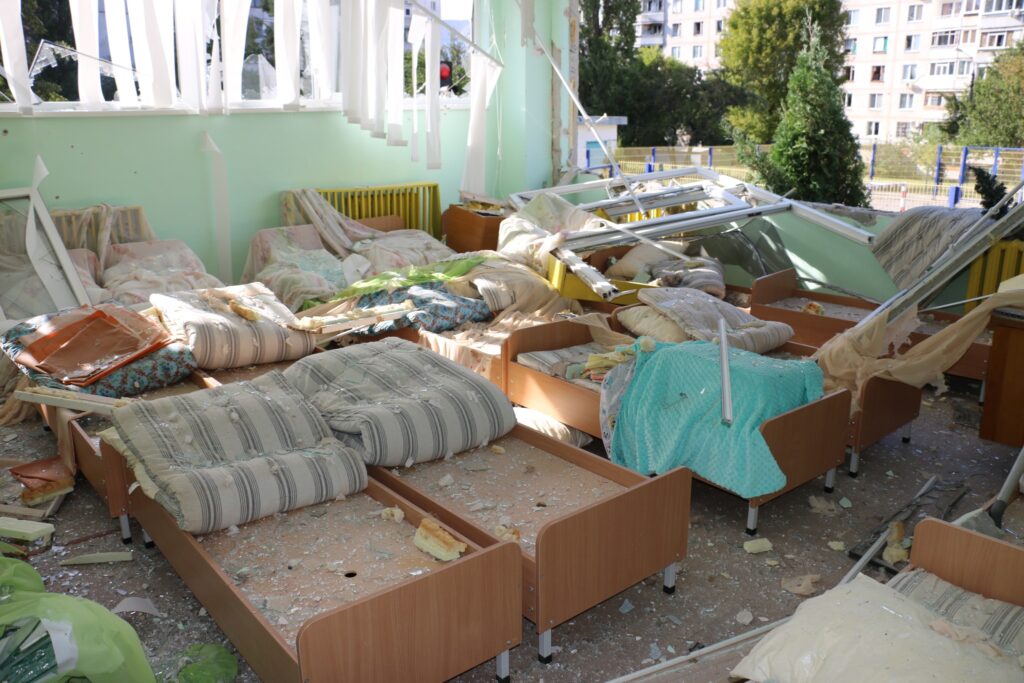
All in all, dispersed along the lines of local specificity and differing policies in the hosting societies, Ukrainian refugees have to manage the gaps of local care institutions on their own. Alternatively, they can look for additional support either from volunteer initiatives or from traditional informal networks. However, the first option is sporadic and can provide women only with short-term and sometimes unpredictable assistance in reproductive labor. Volunteers and different organizations can care for their children at best several hours per week and their activities may easily vanish or have already vanished. And while traditional – in the sense of being accustomed to – informal networks often remain the only answer, being cut off from them so abruptly means that these networks do not flourish automatically. Though “spinning” (networking) skills and reciprocal usage of these networks are embedded in female gender roles and socialization, understanding of spinning circumstances and patterns highlights both how important they are and which structures of inequalities stand behind them.
Transferring and mobilizing networks of support
The most predictable strategy, used by Ukrainian refugees with children, is to flee the war together with friends and relatives in order to transfer the fragments of their existing support networks across the border. Due to governmental restrictions, mostly the female part of the women’s networks are the one crossing the borders: mothers, sisters, and female friends. They often settle together or nearby and are more or less actively involved in domestic and care labor, supporting those in enforced single motherhood. This transfer and arrangements are relatively planned (though many decisions are made in a situation of emergency) and reproduce the accustomed patterns of care.
The most “natural” refugees’ care arrangements which are transferred in this case involve women from a family’s older generation. In Ukraine, as in many other societies, grandmothers often play an active role, sometimes becoming a child’s primary caretaker, compensating for the lack of affordable options of childcare before the age of 3, or become the second carer in single mothers’ households. Such a “natural” arrangement in Ukrainian society rests on structures of capitalist and patriarchal inequalities. On the one hand, due to low wages, many families cannot survive with one wage-earner while another adult (the mother of a child – in a vast majority of cases) is on childcare leave. This pushes both parents to the labor market and forces them to look for alternative care options. Traditional gender roles, a relatively low pension age (60-65 years[13]), very low pensions (115 EUR on average[14]), discrimination against older women on the labor market and unaffordable housing which forces different generations to cohabitate – all are factors that make a grandmother the most common carer from one’s own extended family. Fleeing with such preexisting networks and care arrangements is the most predictable and stable.
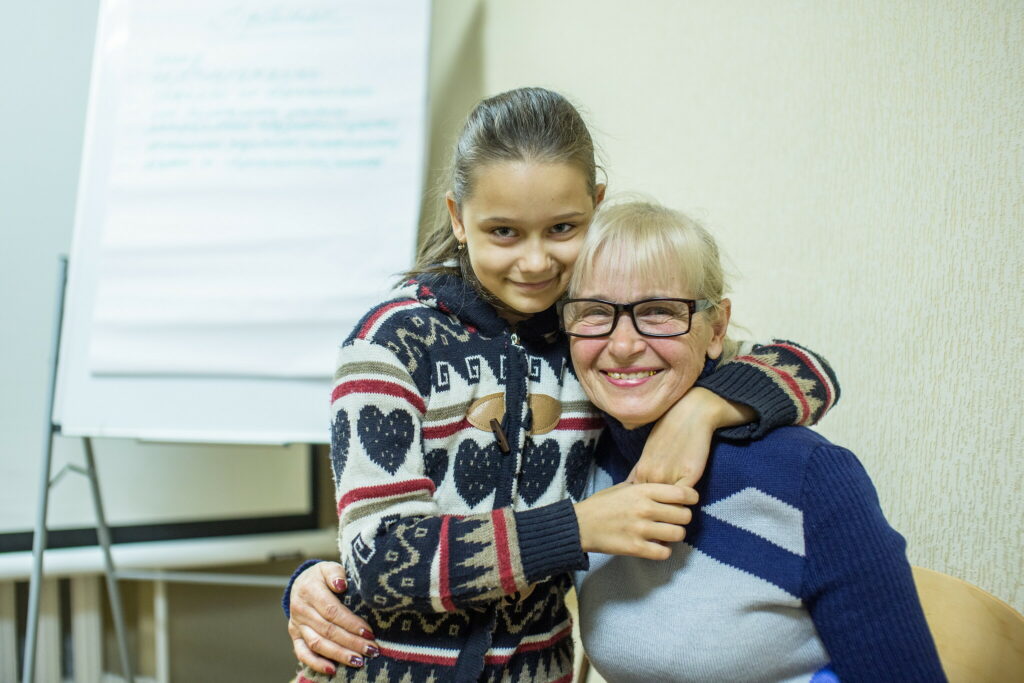
Other strategies involve the mobilization and partial spinning of the existing networks. First of all, the existing crossborder networks influence women’s decisions regarding the destination to which to flee. In this case, destinations of the enforced single mothers are adjusted according to potential networks of support in host countries. As they flee, women will often choose to go to a country and a city where someone they know is already based there, and settle in their household or at least nearby in order to be able to access permanent or sporadic assistance with reproductive labor. Here all the possible networks can be involved, starting with close relatives and friends, and ending with relatively distant acquaintances. For example, one woman, with whom I’ve talked, has chosen her destination because of her mother’s female friend living nearby. Another was heading to a place where her ex-colleague was living with her family. In the end, this strategy can work or can fail in the sense that here we are not speaking about the actual, but about potential networks of support. Care arrangements can be negotiated in advance or they can be just assumed, but they can fail to work in both cases.
Network transfers can also go together with network spinning, when women flee the war together with those who have not provided active support in their care labor before, but agreed to do so. Sometimes these transfers take the shape of unaccustomed cooperation between different families with children, when loosely related families, without previous care arrangements, depart and settle together to support each other. Exchange of resources can happen within these cooperation arrangements. For example, one woman can provide time in the form of childcare for both her and another family’s child, and get material support in return from that family.
These cooperative families can be related in different ways – as relatives, friends, acquaintances, neighbors and even colleagues. In other words, all possible types of networks can also be mobilized. In one case, a woman fled with her husband’s friend and his family. In another, female colleagues with children decided to flee and settle together. There are cases when such cooperative departures are organized from the outside and pre-designed to provide mutual care arrangement. In one case, a residence was organized for cultural workers with children, and they settled together and supported each other in care provision. In another case, a foreign corporation arranged the departure of its workers to a neighboring country and settled them in a hotel together. In the end, women continued to work at a local factory branch of this corporation and provided care for each other’s children in shifts. Though the last arrangement helps women to deal with their double roles as single carers and workers, it also allows the corporation to deal with the situation without extra expenses. In this case, one can speak about the merging of the profit-oriented approach and an assumption about “natural” solutions, instead of socializing care.
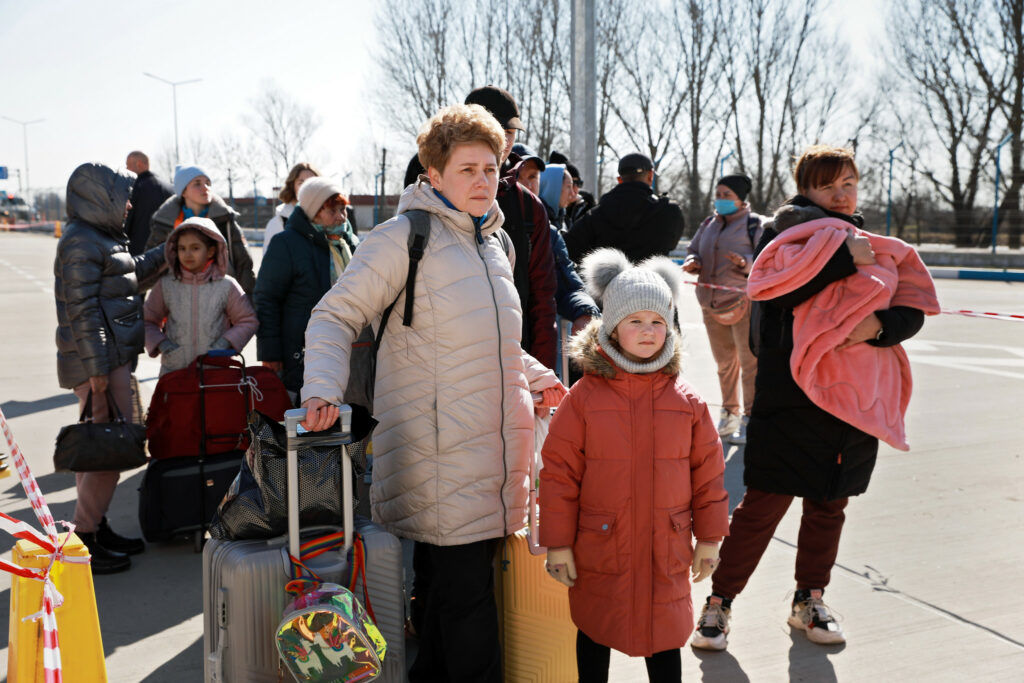
Spinning the net of support
In many cases, though, when network transfer or mobilization is not possible, women in enforced single motherhood have to spin them from scratch. This spinning is often spatially localized where settlement and care labor are concentrated. Women refugees meet each other in camps and dormitories where they are accommodated, in long lines when managing paperwork and social payments, in kindergartens, schools and playgrounds, during events, and in social media or chat groups organized for Ukrainian refugees with children. These settings become nodes which facilitate mutual recognition and experiences, enabling, shortening and simplifying precisely the type of connections where reciprocity of care assistance can emerge.
The degree of mutual care can greatly vary in the newly created networks and depends both on women’s needs for assistance and their capacities to provide them in return. For example, in an extreme but not a very common case, a woman with a toddler who cannot find a place in local kindergartens but still has or wants to go to integration courses, looks for another woman in the same situation to babysit in shifts. Such announcements appeared from time to time in local support chats, though, it is hard to say to which extent this type of arrangement works. I have not come across such functional cases, and one woman with whom I’ve talked was complaining that she tried to organize a similar exchange but did not receive a positive response from other refugee women.
For those whose children are in primary schools, the schoolyard becomes the place of meeting and building initial connections which can evolve into networks of support – this is especially facilitated in cases when separate classes for Ukrainian children are created. It is quite common that women who live nearby pick up children from school in turns. This can be both as a regular practice, as well as a way to deal with emergencies, when for some reason a mother cannot make it. The older the children, the less care support women need. Refugees with teenagers use newly created networks rather for other purposes: psychological support, information exchange, socialization, etc.
When in the same situation, sharing the same experience and having opportunities to meet and connect in spaces explicitly related to social reproduction, Ukrainian refugees tend to support each other in care. However, gender roles and gender socialization can lead to solidarity networks outside of this community. There are stories when women were helped by hosting families – not only in terms of settling, but also sporadically in managing care. One woman said that in her case the main support in care labor came from a female neighbor from Turkey. Having children herself, and knowing what it meant to be with them in a foreign country, the neighbor proposed to look after the Ukrainian refugee’s child so her mother could have some time to care for herself.
The lack of support networks and how this influences women in refuge is another side of the story. From my conversations with Ukrainian refugees it becomes obvious that the lack of support and the inability to find and establish a care network can lead to an inability to manage in enforced single motherhood, both physically and psychologically, and sometimes even to choose to return with one’s children back to Ukraine. Though this experience is harder to track, it appears that a fear of detachment from one’s usual networks of support may also play a great role for those who decide to stay with their children in their hometowns or to flee only inside the country, still facing the threat of shelling, power cuts, lack of income, and a harsh winter.
Their Political Future and the Structures Behind Refugees’ Care Networks
Displacement, triggered by Russian military aggression and border regulations, shaped by the Ukrainian government, influence the initial pool of networks which can be transferred, mobilized, and created to manage enforced single motherhood. However, in most cases the care part of refugee support is centered on female figures: female relatives, friends, colleagues, and acquaintances. Structures of gender and economic inequalities, gender roles and socialization, naturalize women as carers and the ones responsible for unpaid reproductive labor. This explains the gendered character of previously established, negotiated, assumed and newly created care arrangements for women escaping the war. Predominantly female networks of support have been used in Ukraine before the war, as in many other countries, to stitch the gaps created by profit-oriented economies and austerity-driven policies. This continues in the refuge.
The structures of class and income inequality may also play a paradoxical role in refugees’ access to care networks. Those women, who are otherwise in a more privileged position due to available income and previously established professional connections abroad, often settle immediately or quite fast in a separate apartment and don’t need social payments. While this makes the material side of their life far easier, it also partially cuts them off from other Ukrainian refugees: they don’t cohabit in camps and dormitories, they don’t have to go regularly to different social institutions. In the end, they may have far less possibilities to build connections and create a network of care. One woman, who had lived for five months in a camp with her toddler and then was settled in a dormitory, cohabiting with another family, said she was lucky: unlike her sister, who settled in a separate apartment, she could build connections with other Ukrainian women who could support her in care. Another woman, who works in a research institution and lives separately with her son, said explicitly that she felt isolated and there was nobody to back her up.
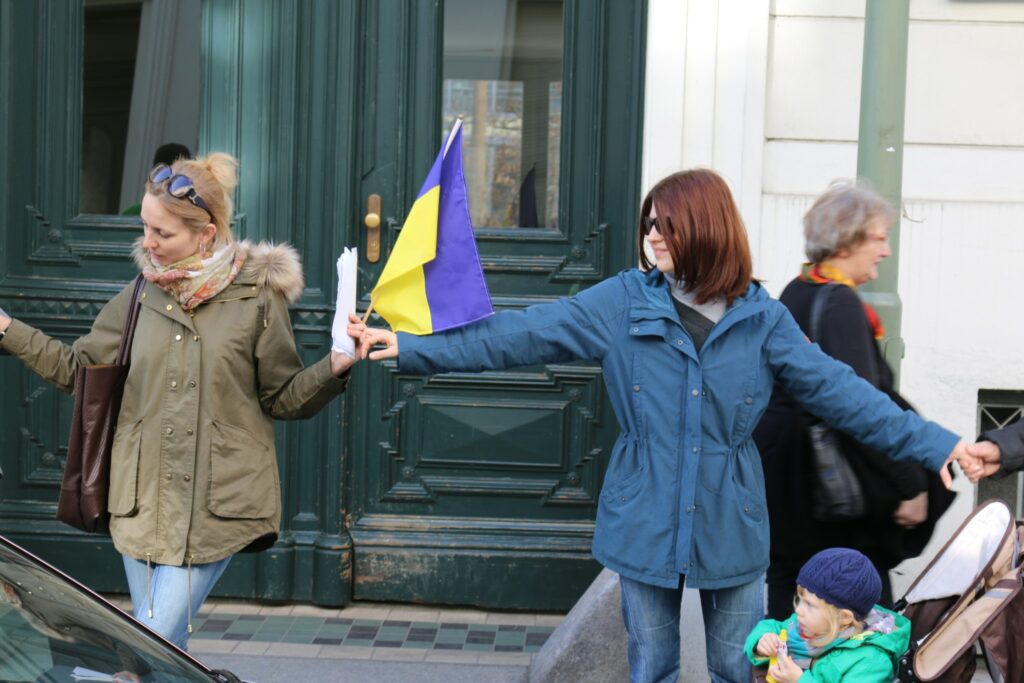
The described networks of support are definitely about everyday solidarity and reciprocity. However, this solidarity is not necessarily translated into organized collective efforts to deal with the problems of social reproduction and structural inequalities which create them. Situated in the sphere of reproduction, artificially pushed into the private sphere in modern societies, relying on and spinning around naturalized care work, female networks of everyday solidarity and reciprocity have only a very basic potentiality for political mobilization. Refugees’ care networks are additionally fragmented and fluid; they bear the burden of vulnerability, rooted in the situation of war and displacement. Nevertheless, sometimes these networks are used to mobilize Ukrainian refugees in volunteering or political efforts to deal with the war and its consequences: information about protest events in support of Ukraine, or collective efforts needed for humanitarian or military support is circulating there. In this respect they currently play the role of supplementary networks, vaguely centered around different political or cause-oriented initiatives. To which extent these networks can be mobilized to deal with the problems of care infrastructure on the level of policies – either in refuge or back in Ukraine – remains an open question.
The research became possible with support from the Rosa Luxemburg Stiftung
Read the article in CEE languages on ELMO member platforms:
- in Ukrainian on Spilne/Commons
- in Serbo-Croatian Mašina and Radnička prava
- in Romanian on Platzforma and Gazeta de Artă Politică
- in Hungarian on Mérce
- in Bulgarian on Baricada Bulgaria and dVersia
Subscribe to ELMO’s newsletter here.
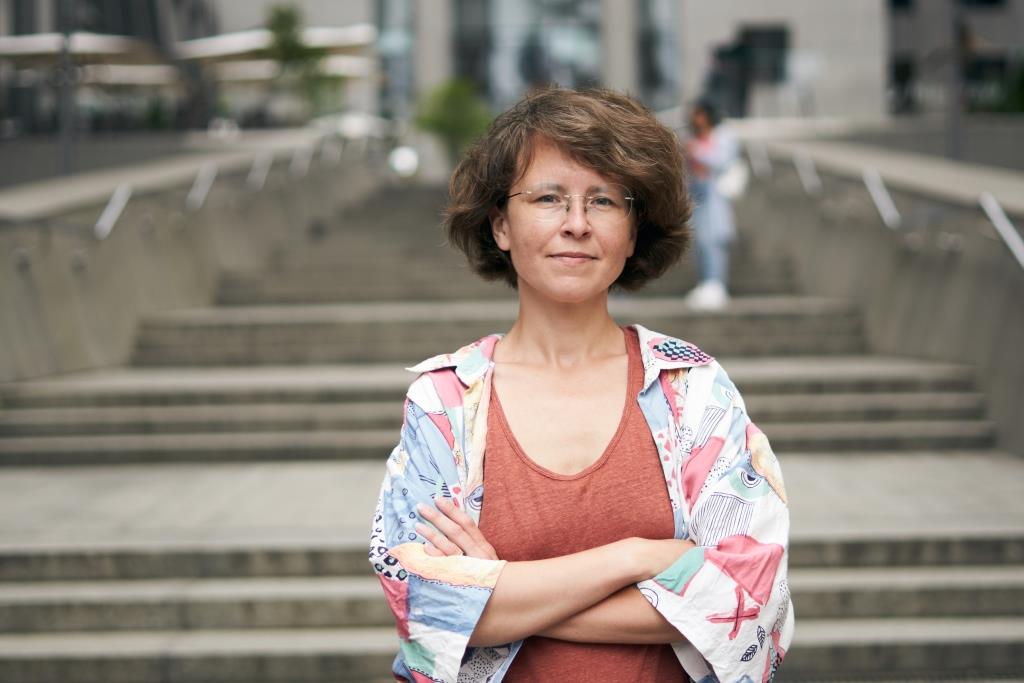
Oksana Dutchak, born in 1987, holds a PhD in social sciences. She is co-editor of Spilne/Commons Journal and is currently continuing her academic work within the Berliner Institut für Empirische Integrations- und Migrationsforschung. Her research interests include: protests, workers protests, gender inequality, social reproduction, care labor, Marxism, Marxist feminism. Oksana is devoted to engaged and public research, which contributes to public discussion and policies, trying to give the voice to workers and other structurally underprivileged groups. Currently she is a refugee in Germany, with two kids and a dog.
[1] UNHCR. November 2022. “Operational Data Portal: Ukrainian refugee situation.” https://data.unhcr.org/en/situations/ukraine.
[2] Out of 7.8 million, 4.7 million registered for Temporary Protection or similar national protection schemes in Europe. Additionally, 2.8 million are reported in Russia and from tens of thousand to over one hundred thousand in different non-EU countries.
[3] UNHCR. September 2022. “Lives on Hold: Intentions and Perspectives of Refugees from Ukraine #2”. https://data.unhcr.org/en/documents/details/95767.
[4] According to UNHCR report, children 0-17 years old constitute 35% of refugees’ households.
[5] Bakker, Isabella, and Rachel Silvey. “Introduction: Social reproduction and global transformations–from the everyday to the global.” Beyond states and markets: The challenges of social reproduction (2008): 1-15;
Katz, Cindi. “Vagabond capitalism and the necessity of social reproduction.” Antipode 33.4 (2001): 709-728;
Ferguson, Susan, and David McNally. “Capital, Labour-Power, and Gender-Relations: Introduction to the Historical Materialism Edition of Marxism and the Oppression of Women.” Marxism and the Oppression of Women. London: Brill (2013);
Federici, Silvia. “On Primitive Accumulation, Globalization and Reproduction.” Friktion: Magasin for køn, krop, and kultur (2017);
And others.
[6] Gimenez, Martha E. “Capitalism and the oppression of women: Marx revisited.” Science & Society (2005): 11-32;
Mies, Maria. “Patriarchy and accumulation on a world scale revisited.(Keynote lecture at the Green Economics Institute, Reading, 29 October 2005).” International Journal of Green Economics 1.3-4 (2007): 268-275;
Rioux, Sébastien. “Embodied contradictions: Capitalism, social reproduction and body formation.” Women’s Studies International Forum. Vol. 48. Pergamon, 2015; And others.
[7] Dutchak, Oksana. 2018. “Conditions and Sources of Labor Reproduction in Global Supply Chains: the Case of Ukrainian Garment Sector”. Pp. 19-26 In Bulletin of Taras Shevchenko National University of Kyiv. Sociology, # 9.
[8] Dutchak, Oksana. 2018. “Crisis, War and Austerity: Devaluation of Female Labor and Retreating of the State”. Rosa Luxemburg Stiftung, Berlin.
[9] Tkalich, Olena. 2020. ““Be like Nina”: how the movement of nurses was born during the pandemic and health care reform”. Commons [in Ukrainian] https://commons.com.ua/uk/ruh-medsester-pid-chas-medreformy-i-pandemii/.
[10]Dutchak, Oksana, Olena Strelnyk, Olena Tkalich. 2020. “Who cares? Kindergartens in the context of gender inequality”. Center for Social and Labor Research, Kyiv;
and
Dutchak, Oksana. 2021. “They Will ‘Manage Somehow’: Notes from Ukraine on Care Labor in the Time of the Local and Global Crises”. Pp. 105-112 in Essential Struggles: Pandemic Fronts. LevFem, Friedrich-Ebert-Stiftung, Sofia.
[11] Dutchak, Oksana, Olena Tkalich. 2021. “Single mothers in Ukraine. Poverty, violation of rights and protest potential”. Commons [in Ukrainian] https://commons.com.ua/uk/odinoki-materi-v-ukrayini-bidnist-porushennya-prav-ta-potencial-do-protestu/.
[12] Of course, the diversity of policies, resources and capacities of the European care infrastructure is huge. This influences the experiences of Ukrainian refugees greatly and in many cases they find themselves in the care and social systems which function far better than a Ukrainian one before the war. However, in all cases some varying share of reproductive labor is left behind and this variety is shaped by the scope and dynamics of austerity policies in every country.
[13] Depending on the duration of working experience: if the working experience is 29 years and more, a person can retire being 60 years old; with working experience 15-19 years one must be 65 to retire. Before the pension reform, initiated in 2011, the pension age was 55 years for women and 60 years for men. There are plans to increase the pension age further.
[14] As of July 2022, there were 10.8 million retired people in Ukraine. The average pension was UAH 4437 (EUR 115). Approximately 43% of retired people in Ukraine were getting below UAH 3000 (EUR 78). On average women are getting 30% lower pensions than men.

